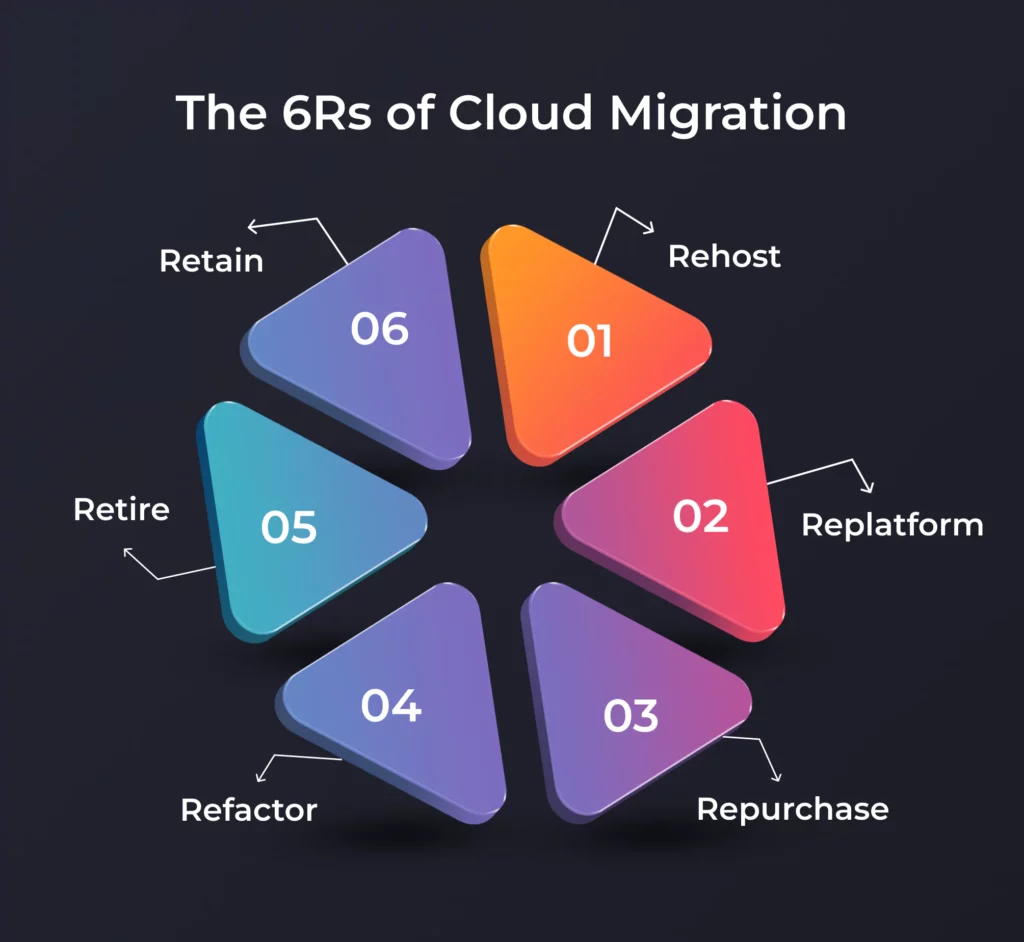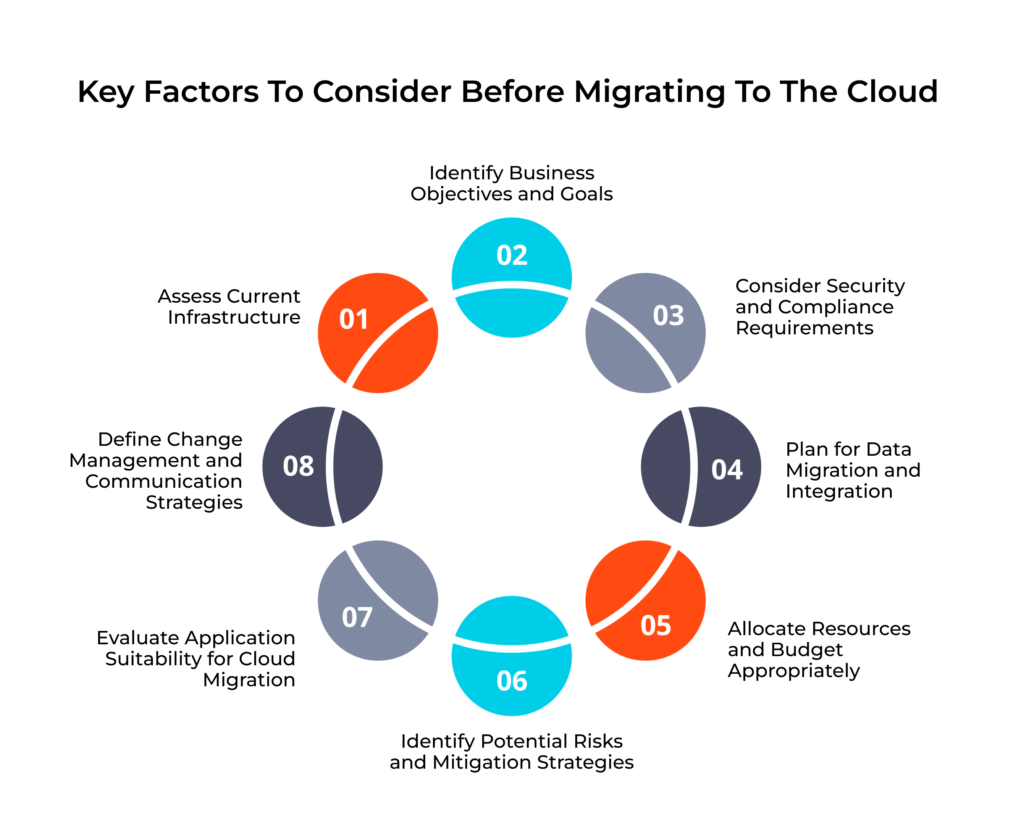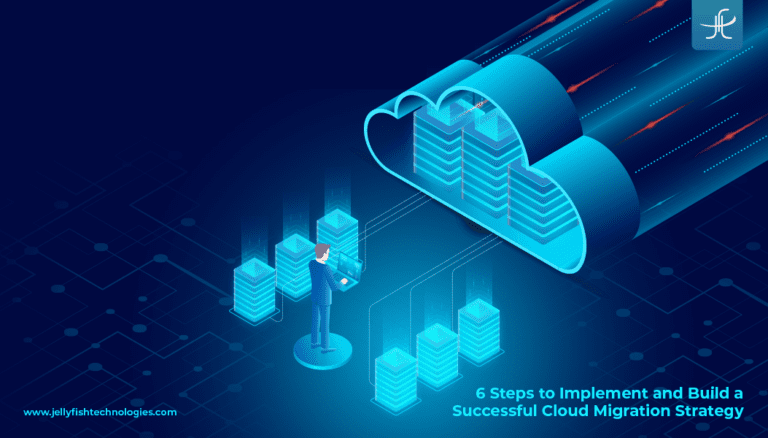In the dynamic and ever-shifting terrain of the modern digital era, adopting cloud technologies has become advantageous and imperative for businesses striving to stay competitive and resilient. At the forefront of this digital transformation journey lies the pivotal concept of cloud migration. As organizations seek to optimize their operations, enhance scalability, and drive innovation, the strategic shift from on-premises infrastructure to cloud-based solutions has emerged as a cornerstone of success.
Cloud migration encompasses the process of transitioning data, applications, and infrastructure from traditional on-premises environments to cloud-based platforms. This paradigm shift offers multifaceted advantages, ranging from improved agility and flexibility to enhanced collaboration and cost efficiency.
In this comprehensive guide, we delve into the intricacies of the cloud migration strategy, elucidating its fundamental principles, benefits across diverse industries, and the critical framework of the 6Rs. Whether you’re a seasoned IT professional or a business leader embarking on your organization’s digital transformation journey, this guide serves as your roadmap to success in harnessing the full potential of cloud technologies.
Let’s start!
What Is Cloud Migration?
At its essence, cloud migration encapsulates the strategic process of transferring data, applications, and infrastructure from traditional on-premises environments to cloud-based platforms. It represents a paradigm shift in the way organizations store, manage, and leverage their digital assets, offering unparalleled scalability, flexibility, and agility.
Cloud migration comprises three pivotal components:
Data Migration
This involves the smooth transfer of data from on-premises storage systems to cloud repositories. By ensuring accessibility, security, and integrity, data migration lays the foundation for leveraging cloud-based insights and resources effectively.
Application Migration
Application migration entails moving software applications from local servers to cloud-based platforms. This transition enhances performance, enables scalability, and fosters seamless collaboration among teams, irrespective of geographical boundaries.
Infrastructure Migration
Infrastructure migration marks the transition of essential components, such as servers, networks, and storage, to cloud environments. By facilitating resource optimization, cost efficiency, and scalability, this migration empowers organizations to adapt swiftly to evolving demands and capitalize on the benefits of cloud technology.
Benefits of Cloud Migration Across Industries
Let’s now explore the different ways in which cloud migration is revolutionizing key industries, including telecommunications, healthcare, financial services, education, and more.
1 – Telecommunications
Scalability and Flexibility
Cloud migration enables telecommunications companies to scale infrastructure dynamically in response to fluctuating demand, ensuring seamless connectivity and optimal performance for their vast networks.
Enhanced Customer Experience
By leveraging cloud-based solutions for customer relationship management (CRM) and analytics, telecom firms can personalize services, anticipate customer needs, and deliver superior experiences across multiple touchpoints.
Eager to explore the dynamic realm of cloud computing within the telecom industry? You may find this interesting: A Guide to Cloud Computing in the Telecom Industry: Types, Modals, Benefits, & Trends.
2 – Financial Services
Cost Efficiency
Cloud migration enables financial institutions to reduce infrastructure costs by eliminating the need for extensive on-premises hardware and maintenance. Pay-as-you-go models and resource optimization drive cost efficiency while maintaining robust security and compliance standards.
Bespin Labs Partners With Jellyfish Technologies To Launch Patronum, Revolutionizing Google Workspace Management And Enhancing Organizational Efficiency
Agile Financial Operations
Cloud-based solutions empower financial firms to streamline operations, accelerate decision-making, and enhance customer service through automated processes, real-time data insights, and seamless integration across banking, insurance, and investment services.
3 – Education
Remote Learning and Collaboration
Cloud migration facilitates remote learning initiatives by providing educators and students with anytime access to educational resources, collaborative tools, and interactive learning environments.
Scalable Infrastructure
Educational institutions can leverage cloud-based infrastructure to scale resources according to changing enrollment levels, accommodate peak demand during exams or admissions, and deliver uninterrupted services to students and faculty.
4 – Healthcare
Secure Data Management
Cloud migration empowers healthcare providers to securely store and manage sensitive patient data, ensuring compliance with stringent regulations such as HIPAA. Centralized data access also facilitates seamless collaboration among healthcare professionals and improves patient outcomes.
Innovative Healthcare Solutions
Cloud-based platforms facilitate the development and deployment of innovative healthcare solutions, such as telemedicine, remote patient monitoring, and predictive analytics, revolutionizing patient care delivery and healthcare management.
Are you interested in learning about the transformative potential of cloud computing in healthcare? Dive into our comprehensive guide: How Cloud Computing Is Benefiting The Healthcare Industry?
5- Retail and E-Commerce
Agile E-Commerce Platforms
Cloud migration empowers retailers to build scalable, responsive e-commerce platforms that can handle surges in online traffic during peak seasons, offer personalized shopping experiences, and optimize inventory management and fulfillment processes.
Data-Driven Insights
By leveraging cloud-based analytics and machine learning capabilities, retailers can gain actionable insights into customer behavior, market trends, and inventory performance, enabling data-driven decision-making and targeted marketing strategies.
6 – Manufacturing and Supply Chain
Supply Chain Visibility
Cloud-based supply chain management systems provide manufacturers with real-time visibility into inventory levels, production processes, and logistics operations, enhancing efficiency, reducing costs, and mitigating risks across the supply chain.
Predictive Maintenance
Cloud-enabled predictive maintenance solutions leverage IoT sensors and analytics to monitor equipment health, anticipate maintenance needs, and optimize asset performance, minimizing downtime, and maximizing productivity on the factory floor.
7 – Hospitality and Tourism
Scalable Reservation Systems
Cloud migration enables hospitality businesses to efficiently manage reservations and bookings by providing scalable and reliable reservation systems. This ensures seamless handling of peak booking periods and enhances customer satisfaction.
Personalized Guest Experiences
Cloud-based CRM platforms allow hospitality providers to collect and analyze guest data, enabling them to offer personalized experiences tailored to individual preferences.
The 6Rs of Cloud Migration
When embarking on a cloud migration journey, organizations must navigate a multitude of options and strategies to ensure a seamless transition to the cloud environment. One such strategic framework widely employed is the “6Rs” of cloud migration. This framework provides a structured approach for categorizing applications and workloads based on their suitability for migration to the cloud.

Let’s delve into each of the 6Rs and understand their significance in crafting a successful cloud migration strategy.
Rehost
Rehosting, often referred to as lift-and-shift, involves migrating applications and workloads to the cloud with minimal modifications. In this approach, the goal is to replicate the existing infrastructure in a cloud environment without making significant changes to the application architecture.
Rehosting is favored for its simplicity and speed, making it an ideal choice for applications with minimal dependencies and straightforward configurations.
Replatform
Replatforming, also known as lift-tinker-and-shift, involves making minor adjustments to applications to optimize them for the cloud environment while retaining their core functionalities. This approach allows organizations to take advantage of cloud-native features and services, such as auto-scaling and managed databases, without the need for full-scale redevelopment.
Replatforming strikes a balance between speed and optimization, making it suitable for applications that can benefit from cloud enhancements without undergoing extensive refactoring.
Repurchase
Repurchasing entails replacing on-premises software with cloud-based alternatives, such as Software as a Service (SaaS) solutions.
Organizations may opt for repurchasing when existing on-premises software no longer meets their needs or when cloud-based alternatives offer superior functionality, scalability, and cost-effectiveness.
Create Value and Transform Your Business with Cloud Migration Consulting
Migrate your legacy application to the cloud to deliver advanced digital experiences, enhance agility, and improve market responsiveness.
Refactor
Refactoring, or re-architecting, involves restructuring and redeveloping applications to fully leverage cloud-native features and capabilities. This approach aims to optimize applications for the cloud environment, making them more scalable, resilient, and cost-effective.
Refactoring may involve breaking monolithic applications into microservices, adopting serverless architectures, or leveraging containerization technologies. While refactoring requires substantial investment and effort, it enables organizations to maximize performance, scalability, and innovation in the cloud.
Retire
The retire strategy involves identifying and decommissioning unused or redundant applications and systems.
By retiring obsolete applications and infrastructure components, organizations can streamline their IT portfolio, reduce maintenance costs, and free up resources for strategic initiatives. This strategy is essential for optimizing cloud migration efforts, ensuring that only necessary and relevant assets are migrated to the cloud environment.
Retain
The retain strategy involves keeping certain applications or workloads on-premises due to compliance, regulatory, or legacy reasons. This approach allows for a gradual migration process that prioritizes stability, security, and regulatory adherence, laying the groundwork for successful long-term integration into the cloud environment.
Key Factors To Consider Before Migrating To The Cloud
From assessing current infrastructure to planning for data migration and security measures, each step plays a crucial role in shaping the overall cloud migration strategy. Let’s explore the key factors that organizations should consider before migrating to the cloud.

Assess Current Infrastructure
Before initiating the cloud migration process, organizations should conduct a comprehensive assessment of their current infrastructure, including hardware, software, and network configurations. This assessment helps identify existing systems and applications, their dependencies, and their suitability for migration to the cloud.
Identify Business Objectives and Goals
It is essential to define clear business objectives and goals before embarking on a cloud migration journey. Organizations should identify the specific outcomes they aim to achieve through cloud adoption, whether it’s improving scalability, enhancing agility, reducing operational costs, or driving innovation.
Consider Security and Compliance Requirements
Organizations must assess their security requirements and regulatory obligations to ensure that sensitive data remains protected throughout the migration process and within the cloud environment. This may involve implementing encryption protocols, access controls, and data governance measures to safeguard data integrity and confidentiality. Compliance with industry-specific regulations, such as GDPR or HIPAA, should also be a priority.

Plan for Data Migration and Integration
Data migration is a critical aspect of cloud migration, requiring careful planning and execution to minimize disruptions and ensure data integrity. Organizations should develop a detailed data migration plan that outlines the process for transferring data from on-premises systems to the cloud environment. This plan should address data cleansing, mapping, validation, and synchronization requirements, as well as considerations for handling large volumes of data and potential downtime during migration.
Allocate Resources and Budget Appropriately
Organizations should allocate resources and budget appropriately to support all stages of the migration process, from planning and assessment to execution and post-migration optimization. This may involve investing in cloud migration consulting services, training employees on cloud technologies, and provisioning sufficient infrastructure and bandwidth to support cloud workloads.
Identify Potential Risks and Mitigation Strategies
Cloud migration introduces various risks and challenges, including data loss, downtime, performance issues, and security vulnerabilities. Organizations should identify potential risks associated with cloud migration and develop mitigation strategies to address them effectively. This may involve conducting risk assessments, implementing backup and disaster recovery plans, and establishing contingency measures to minimize the impact of unforeseen events during migration.
Evaluate Application Suitability for Cloud Migration
Not all applications are equally suited for migration to the cloud. Organizations should evaluate the suitability of each application based on factors such as architecture, dependencies, performance requirements, and data sensitivity. Mission-critical applications with complex architectures or strict performance requirements may require more extensive planning and testing before migration.
Define Change Management and Communication Strategies
Cloud migration involves significant changes to IT infrastructure, workflows, and processes, which can impact employees, stakeholders, and business operations.
Organizations should develop comprehensive change management and communication strategies to manage expectations, address concerns, and facilitate a smooth transition to the cloud. This may involve providing training and support to employees, communicating project timelines and milestones, and fostering a culture of collaboration and transparency throughout the migration process.
Unlock Cloud Migration Excellence with Jellyfish Technologies
At Jellyfish Technologies, we specialize in delivering unparalleled cloud consulting services to help businesses unlock the full potential of cloud migration. With our expertise and dedication, we guide organizations through every step of the cloud migration journey, ensuring seamless integration, optimal performance, and maximum ROI.
Our comprehensive suite of cloud consulting services encompasses strategic planning, assessment, implementation, and optimization, tailored to meet the unique needs and objectives of each client. Whether you’re migrating to public, private, or hybrid cloud environments, our team of experts leverages industry best practices and cutting-edge technologies to streamline the migration process and accelerate time-to-value.
Why wait? Contact us today.


